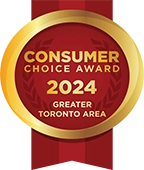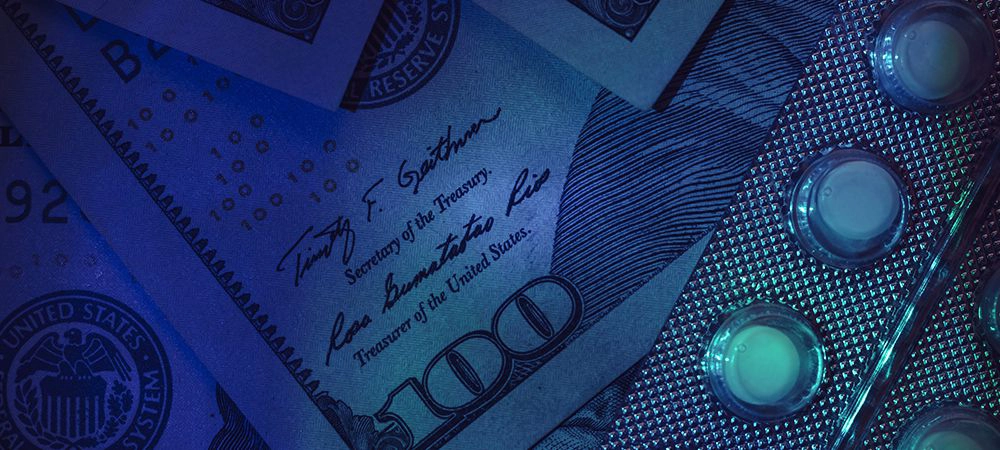The cost of treating depression can be a bit on the high side. Yearly numbers show that depression treatment costs the Canadian economy billions of dollars. This includes out-of-pocket costs as well as government and private insurance programs.
Depression is a disease. Despite the fact that it affects your mental health, it won’t go away on its own. You’ll need treatment and therapy that can only be administered by specialists. With this in mind, it’s only normal to have questions about the pricing for depression treatments.
Perhaps the only upside to the cost of treating depression is how comprehensive it can be. In addition to therapy, you can expect medication, yoga, physical therapy and a strict diet regime. These facets of treatments will work together to ensure recovery from depression.
No matter how high the cost of depression is, receiving treatment is essential. There are ways to minimize the cost of treating depression without depriving yourself of the vital services that’ll help you get better.
Cost of Treating Depression Through Therapy
Usually, therapy accounts for up to 50% of the overall cost of treating depression. A therapy session may cost about $150 per hour out of pocket. Depending on the severity of your condition, you may need therapy sessions for an extended period, probably a year.
Many clinics offer a package of six therapy sessions. This will cost you between $700 to $900. With insurance coverage, you may end up spending less out of pocket on depression treatment costs.
Therapy usually involves cognitive behavioural therapy and psychotherapy. You’ll speak with a psychiatrist who will help you train your mind to overcome depression. For your treatment to be effective, you must attend all your sessions.
Therapy for depression treatment can come as part of two different types of programs. It may be inpatient or outpatient care.
In-Patient Care
The cost of treating depression through inpatient care will cost you between $6,000 to $8,000 per month. When it comes to overcoming depression, inpatient care is very effective. As the name implies, this program offers a homey setting with day-to-day clinical psychiatric care.
Essentially, you’ll be provided with food, clothing as well as additional therapeutic resources that’ll make your recovery process more manageable. One vital benefit of this program is you’ll have more time to focus on your treatment.
Not to mention, it’ll equip you with coping skills to lead an everyday life that’s devoid of depression. You’ll be closely monitored, and your medications will be administered on time. With the inclusion of support groups and private therapies, inpatient monthly depression treatment costs may add up to $10,000.
Many inpatient facilities offer sliding scale fees to make the treatment affordable. For a three-month stay at a residential facility, expect to pay about $25,000 or more depending on the type of facility. Keep in mind that a luxurious facility may cost you thousands of dollars more than one that only provides the basics.
Outpatient therapy
Compared to the cost of treating depression with inpatient care, this program is more affordable. During outpatient therapy, expect to spend between $3,000 to $5,000 for a three-month schedule. On the other hand, daily sessions may cost between $100 to $300.
Outpatient therapy for depression is best if you have a limited budget. During outpatient care, you’ll get scheduled treatment sessions during the month. It allows you to continue with your daily activities while you receive treatment.
You’ll only need to visit the clinic at allotted times for medications and counselling. At the same time, if you choose to receive complete treatment in your home, the cost of treating depression may fall between $7,000 to $8,500.
Although outpatient care isn’t as intensive as inpatient programs, it comes in different levels of intensity that provide an array of depression services. But the main aim of it is to offer you a system of support and counselling. Outpatient care emphasizes family involvement to help you recover. There are three categories of outpatient care, each with varying prices. They include:
Day Programs

This is the most expensive type of outpatient treatment. For this, you may spend about $500 to $700 per week. In this program, you’ll visit the facility for meetings 4-6 days every week.
On every visit, you’ll participate in group counselling, ongoing therapy, biofeedback and other therapies like aromatherapy and yoga classes. These adjunct treatments may amount to $100. Day programs mandate an immense time commitment which can reduce your ability to attend school or work.
Intensive outpatient treatment
This program features measurable milestones to show your treatment progress. With every milestone you meet, the required time commitment reduces. For this, expect to pay between $300 to $500 per week. It’ll also involve several counselling sessions and group therapies.
Continuing care
This will cost you between $100 to $300 per week. This program requires you to visit the facility weekly. It mainly offers depression treatment and support resources to help you overcome this mental health problem.
Related Article: Depression: Symptoms, Causes
Drugs For Depression: How Much Do They Cost?
Antidepressants are the primary medications that influence the cost of treating depression. Typically, they should cost about $1500 for a month’s supply.
No doubt, several other drugs treat depression, but your specialist will likely begin with antidepressants. That said, here are some common depression drugs:
- Tricyclic drug
- Monoamine oxidase inhibitors (MAOIs)
- Selective serotonin reuptake inhibitors (SSRIs)
- Serotonin and norepinephrine reuptake inhibitors (SNRIs)
Depending on your condition and symptoms, you may not need to use other drugs aside from antidepressants. Thankfully, many insurance companies cover the cost of depression drugs. Below, we’ll list the prices (without insurance) of popular prescription drugs for depression.
| Brand name | Average price for a month supply | Generic name | Average price for a month supply |
| Prozac | $500 | fluoxetine (20 mg) | $5 |
| Zoloft | $330 | sertraline (50 mg) | $8 |
| Wellbutrin XL/SR | $2000/$230 | bupropion XL/SR (150 mg) | $25/$10 |
| Parnate | $1230 | tranylcypromine (10mg) | $140 |
| Cymbalta | $265 | duloxetine (60 mg) | $15 |
| Paxil CR | $235 | paroxetine ER (25 mg) | $50 |
The brand name belongs to the pharmaceutical company while the generic name is the active ingredient that makes the drug potent. Several generic drugs are sold under different brand names. In addition to the above, you’re likely to incur an additional $50 cost on vitamins and supplements.
The precise cost of drugs for depression treatment is a function of different factors. For instance, a luxurious inpatient facility is more likely to prescribe more expensive brand-name drugs than its counterpart. Here are other factors that determine the cost of medications.
- The amount of dosage
- Kind of prescription drug administered.
- Insurance coverage
- Generic name
- Brand name
- Taking more than one type of drug.
If you’re working with a small budget or you’re uninsured, you can save about 20% on medication costs. The reason is most pharmaceutical companies provide assistance programs for patients.
These programs help low-income earners to get their prescription drugs. Besides that, buying the generic version of a drug will save you more money than buying a brand-name product.
How to Pay For Depression Treatment
The good thing is, you can pay the cost of treating depression in various ways. You can pay with insurance, out-of-pocket, student benefits and Employee Assistance Plans.
First, know the plans your insurance company will cover. Most private health plans do not cover therapy and other therapeutic resources. To know the extent of your carrier’s coverage, call or visit their website.
Most graduate programs and colleges comprise on-campus treatment with tuition. You’ll mostly be able to visit the doctor twice or thrice a month at no price, after which they’ll suggest an affiliated expert in your neighbourhood to you. If you’re an active employee, you can check if your company has Employee Assistance Programs that give confidential counselling for staff.
You can further make payment with a Flexing Account or Health Savings Account (HSA) while minimizing taxable income. No matter how you pay, always remember to negotiate your payment.
Ways to Reduce the Cost of Treating Depression
With the rise in the number of people diagnosed, the cost of treating depression in Canada is a concern. Why are people not getting help for their condition? The answer is complicated. To begin with, there’s a lingering stigma around depression that prevents people from seeking help.
Not to mention, the costly fee to treat it also hinders their chances of getting better. Unfortunately, having insurance doesn’t guarantee you won’t have to pay upfront for therapy.
Also, plans with high deductibles won’t cover any depression costs until the deductible has been met. Till that happens, you’ll have to pay out of pocket for your checkups.
Luckily, for individuals who want to overcome depression but don’t have the money to receive treatment, cost-effective aids are available. To help you recover on the right path, below is a list of affordable depression health care options.
Sliding scale fees
In the end, how much to treat depression is a function of the treatment centre. Some centers adjust their hourly rates to make payments more affordable for clients.
They take your income and expenses into account to know how much you can afford every month. If you’re paying out of pocket, searching for sliding scale clinics may be an excellent option.
Use the internet to your advantage. You can get access to mental health directories. These directories allow you to find depression treatment centres offering sliding scale fees in Toronto.
Most of these centers charge between $80 to $170 per session. But with a sliding scale, expect to pay what you can afford without running into debts.
Low-income or free depression services
If you can’t pay out of pocket and you’re uninsured, low-income clinics can make your cost of treating depression cheap. They offer their services by using supervised student psychologists, student social workers and student counsellors.
Their services are either provided at a reduced cost or remarkably at no price. To find a low-income hospital, meet your primary care doctor for recommendations. You can also get a complimentary referral from the Substance Abuse and Mental Health Services Administration (SAMHSA).
Virtual therapy
The cost of treating depression online may cost you between $30 to $70 per week. Although this therapy can’t replace physical sessions, it’s affordable and effective. You can connect with a therapist via text or virtually. If you’re a busy person, a full-time student or a parent, you’ll find this teletherapy beneficial because you can receive help from anywhere.
Unfortunately, this type of care isn’t suitable for everyone. People struggling with severe depression will need remote treatment services than online therapy.
Besides online therapy, mental health apps can teach you relaxation, meditation, and breathing routines. Not only do these apps enable you to form a daily habit of self-care, but studies show that meditation can lessen stress and improve well-being.
Local group therapy
If you’re willing to participate with others, try group therapy. If your monthly depression treatment cost is about $1,500, expect to pay $750 or less with support groups.
Local support groups allow you to connect with people struggling with depression. They also remind you that you’re not alone. When joining a local support group, you must find one that meets your needs.
Related Article: Strategies on How to Cope with Depression
Bottom Line
No doubt, the cost of treating depression is often a deterrent for those who need treatment. But not anymore. Paying for a depression treatment program is affordable. There are many ways to cover the expenses of depression, so don’t let financial limitations keep you from getting the help you need.
Although it may take some effort and time to find a center that suits your budget, the result is worth it. If you desperately need treatment, we can help you get started.
Here at Addiction Rehab Toronto, our depression services are designed to cater to everyone regardless of budget! Contact us to discuss how to pay for your treatment.







